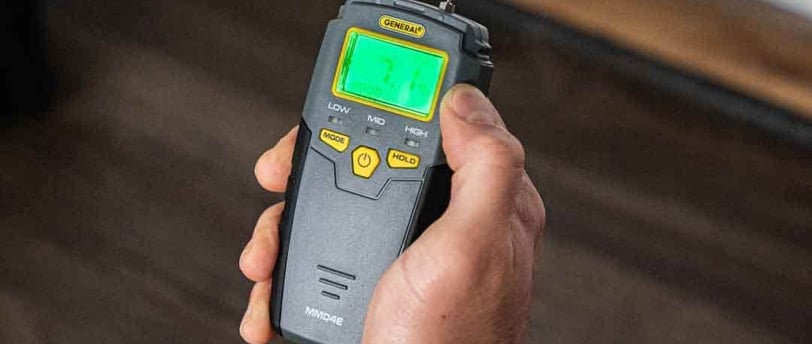Mastering Moisture: A Comprehensive Guide to Moisture Control and Monitoring in Restoration
Moisture Control and Monitoring
11/29/20233 min read


Introduction:
Moisture control and monitoring are at the heart of successful restoration efforts. Whether dealing with water damage, preventing mold growth, or maintaining optimal indoor environments, a nuanced understanding of moisture dynamics is crucial. In this comprehensive guide, we will explore the intricacies of moisture control and monitoring, examining the importance of maintaining the delicate balance of moisture levels in various restoration scenarios.
Section 1: The Foundations of Moisture Control
1.1 The Impact of Moisture on Structures
Moisture, when left uncontrolled, poses a significant threat to structural integrity. It can lead to warping, decay, and compromise the strength of materials, necessitating timely and effective moisture control.
1.2 The Relationship Between Moisture and Mold
Moist environments are breeding grounds for mold. Controlling moisture is a fundamental strategy in preventing mold growth, as mold spores can become active in as little as 24-48 hours after water intrusion.
Section 2: Moisture Control Techniques
2.1 Addressing Water Intrusion Promptly
Swiftly addressing water intrusion is the first line of defense in moisture control. Whether from leaks, floods, or plumbing issues, prompt action minimizes the potential for long-term damage.
2.2 Proper Ventilation
Effective ventilation is a key component of moisture control. Well-ventilated spaces facilitate the natural dispersion of moisture, preventing the buildup of dampness that could lead to structural damage and mold growth.
Section 3: Types of Moisture Control Devices
3.1 Dehumidifiers
Dehumidifiers are stalwarts in the battle against excess moisture. They extract moisture from the air, maintaining optimal humidity levels and preventing the conditions conducive to mold growth.
3.2 Humidifiers
In certain scenarios, such as during the winter months, adding moisture to the air with humidifiers may be necessary to combat overly dry conditions that can lead to issues like cracked wood and static electricity.
3.3 Moisture Barriers
Moisture barriers, such as vapor barriers in crawl spaces, prevent the intrusion of moisture from the ground. They are instrumental in controlling humidity levels and protecting structural elements from the adverse effects of moisture.
Section 4: The Role of Monitoring in Moisture Control
4.1 Understanding Moisture Levels
Moisture levels vary depending on factors such as climate, ventilation, and building materials. Understanding these variations is crucial for effective moisture control.
4.2 Moisture Meters
Moisture meters are indispensable tools in restoration. They provide real-time data on the moisture content of materials, allowing restoration specialists to gauge the effectiveness of control measures and identify potential problem areas.
Section 5: Moisture Monitoring in Water Damage Restoration
5.1 Immediate Response
In water damage restoration, swift action is paramount. Moisture monitoring begins with assessing the extent of the damage and continues throughout the extraction and drying process to ensure thorough restoration.
5.2 Drying Goals
Setting specific drying goals based on moisture readings is a standard practice. Restoration specialists use moisture meters to determine when materials have reached an acceptable level of dryness, signaling the completion of the restoration process.
Section 6: Advanced Moisture Monitoring Technologies
6.1 Infrared Thermography
Infrared thermography is an advanced technology used in moisture monitoring. It detects temperature variations associated with moisture, allowing restoration specialists to identify hidden pockets of dampness that may not be visible to the naked eye.
6.2 Wireless Sensors and Telemetry
Wireless sensors and telemetry systems provide real-time data on moisture levels, allowing for remote monitoring. This technology is particularly valuable in large-scale restoration projects, offering efficiency and precision.
Section 7: Moisture Monitoring for Mold Prevention
7.1 Continuous Vigilance
Preventing mold growth requires continuous vigilance. Regular moisture monitoring is essential, especially in areas prone to dampness or where previous water damage has occurred.
7.2 Maintaining Optimal Humidity
Maintaining optimal humidity levels is a proactive approach to mold prevention. Monitoring and controlling humidity, especially in humid climates or areas with poor ventilation, is a key strategy.
Section 8: DIY Moisture Control Tips for Homeowners
8.1 Regular Inspections
Homeowners can play an active role in moisture control by conducting regular inspections. Identify and address leaks, water intrusion, or areas of high humidity promptly.
8.2 Proper Ventilation Practices
Encourage proper ventilation by using exhaust fans, opening windows, and using dehumidifiers as needed. Good ventilation enhances air circulation, reducing the risk of moisture-related issues.
Section 9: Professional Expertise in Moisture Control
9.1 Certified Water Damage Restoration Specialists
Engaging certified water damage restoration specialists ensures that moisture control strategies are applied with precision. Specialists possess the knowledge and equipment to handle moisture-related challenges in diverse restoration scenarios.
9.2 Collaborative Restoration Plans
Moisture control is an integral component of comprehensive restoration plans. Professionals collaborate to integrate moisture monitoring and control measures seamlessly into restoration projects, ensuring a holistic and effective approach.
Conclusion:
In the world of restoration, mastering moisture control and monitoring is a dynamic and ever-evolving challenge. From preventing structural damage to thwarting mold growth, the ability to understand, measure, and control moisture levels is paramount. By utilizing advanced technologies, staying vigilant in the face of water damage, and engaging professional expertise, restoration specialists and homeowners alike can navigate the complexities of moisture control, ensuring that spaces remain resilient, healthy, and free from the encroachment of excess moisture.
A-Z Dryout
3260 N Hayden Rd STE 210 Scottsdale. Arizona 85251
(480) 617-0978
azdryout@gmail.com
